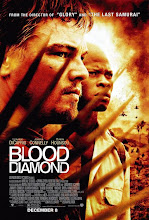According to the UN’s website the UN’s General Assembly, on December 1, 2001, adopted, unanimously, a resolution “on the role of diamonds in fuelling conflict, breaking the link between the illicit transaction of rough diamonds and armed conflict, as a contribution to prevention and settlement of conflicts (A/RES/55/56).”
The adoption of this resolution and the attention given to the issue by the UN is the result of several factors. Kim Richard Nossal discusses them in her article, “Smarter, Sharper, Stronger? UN Sanctions and Conflict Diamonds.” She explains how, in 1993, the UN Security Council unsuccessfully placed sanctions on União Nacional para a Independência Total de Angola (UNITA)- the fighting rebel group in Angola who refused to recognize the results of the UN-supervised elections. These sanctions were largely unsuccessful, like many other UN sanctions of the 1990s, because of their “undifferentiated impact on all those who happened to live within a state targeted by sanctions” and also the weak capacity of the UN to enforce its legislation (250-251).
The late 1990s brought a new debate within the UN on the implementation of effective sanctions. Along with this debate came several other events that helped propel the issue of conflict diamonds onto the agenda. First, in January of 1999 Canada began its two year term on the Security Council and Robert Fowler (a Canadian) was placed on the chair of the Angola Sanctions Committee. (254). Secondly, conflict was increasing in Angola and there was a “renewed” interest in the media about the failure of UN sanctions. This was spurred in large part by the report released by Global Witness, A Rough Trade, which criticized the effectiveness of the UN sanctions in Angola. (256). Thirdly, “merely days after the release of the Global Witness report, UNITA shot down two UN planes.” (256). Canada took its seat on the Security Council the same day one of the planes went down. These events “galvanized” the council’s opinions on acting on the issue of Angola and the diamond trade. (255-256).
Nossal observed how Fowler was able “to pursue a multifaceted diplomatic strategy designed to address the leakage in the measures against UNITA and thus to pursue Canada’s broader UN agenda [reevaluating sanction policy].” (257). Fowler created a UN panel of experts to investigate the problem of conflict diamonds. The panel traveled to 30 countries, talked to members of the industry, heads of government, and NGOs. They presented their findings in a report in December of 2000.
Fowler’s approach reflects the unique Canadian approach to foreign policy. He greatly relied upon the work of NGOs to inform him of the issue. Fowler had established connections with Human Rights Watch and Global Witness. (258). Canadian government lent their support to these groups because they realize “the importance of publicity generated by such campaigns.” (259). The Canadian led Security Council, also, did not hesitate to use what Nossal refers to as the “naming and shaming” game. For the first time, these UN reports did not hesitate to blame certain states for their actions in ignoring and therefore abetting the problem. (261). For all these reasons discussed in this blog, the UN has become strong actor in the issue of conflict diamonds.
Reference:
Nossal, Kim Richard "Smarter, Sharper, Stronger? UN Sanctions and Conflict Diamonds." Cooper, Andrew Fenton, John English, and Ramesh Chandra Thakur. Enhancing Global Governance : Towards a New Diplomacy? Foundations of Peace. Tokyo ; New York: United Nations University Press, 2002.
Below is a list of sites that link you to the UN’s work on Conflict Diamonds:
http://www.un.org/peace/africa/Diamond.html
http://www.globalwitness.org/pages/en/the_united_nations_and_conflict_diamonds.html
http://www.globalpolicy.org/security/issues/diamond/unindex.htm
Subscribe to:
Post Comments (Atom)



1 comment:
Thank you for the information you have shared here. My sell diamond jewelry shop likes this.
Post a Comment